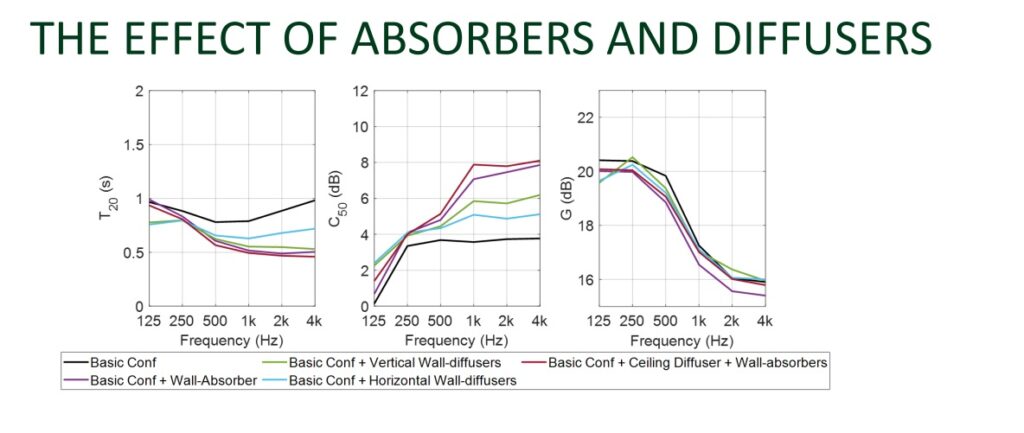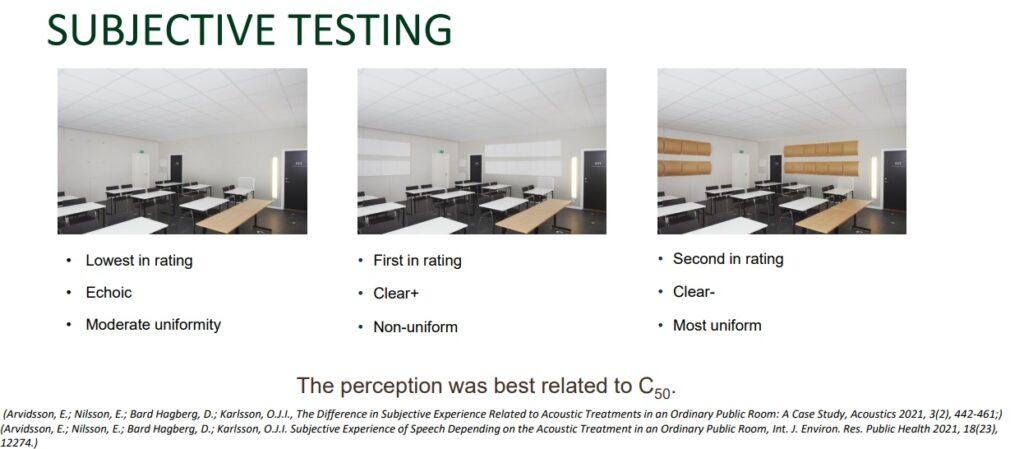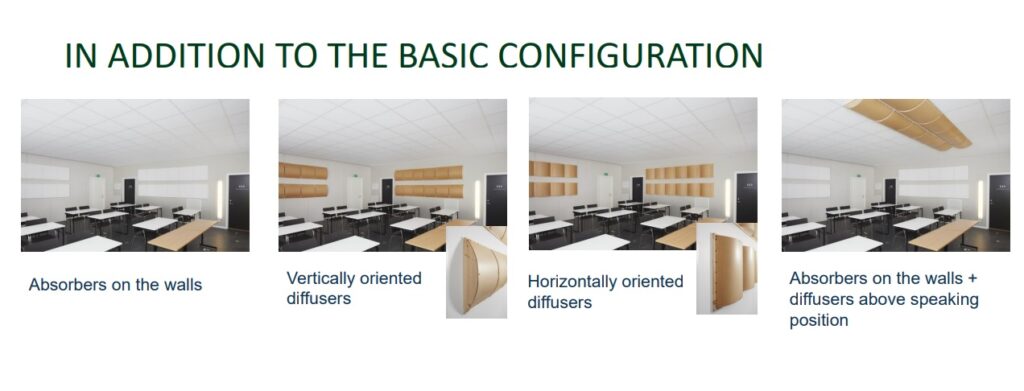
Introduction
Emma Arvidsson, Researcher and PhD ”Acoustic Design with Regard to Human Perception” presented her recent Phd study at EIAS2023. She focused on the objective and subjective aspects of acoustic design in ordinary rooms. Aiming to optimize room acoustics and examining the effects of different sound absorbers and diffusers. ‘Acoustic design plays a crucial role in ordinary public rooms, such as classrooms and offices. The quality of room acoustics significantly impacts 3 key aspects. The effectiveness of communication, cognitive tasks, and overall user experience,’ Emma explained.

Objective Acoustic Design
Emma began her research by constructing a mock-up classroom within a laboratory setting. Initial measurements were taken to determine the baseline room acoustic parameters with a primary focus on reverberation time. ‘However,’ Emma says, ‘two rooms with the same reverberation time can still offer different acoustic experiences . This is mainly due to differences in early reflections and therefore the speech clarity played a significant role in shaping the perceived acoustic quality.’ Moreover, the study explored the energy distribution within the room.
Evaluating the impact of different acoustic treatments was the focus of the study. Emma started with an empty room and gradually added absorbent ceiling panels and furniture. The results showed noticeable effects on room acoustic parameters. The combination of absorbent ceiling and furniture created a basic configuration for the rest of the research.
She then explored the addition of absorbers and diffusers to the basic configuration. Four different concepts were tested, including the following: Increased absorption on the walls, vertically oriented diffusers on walls, horizontally oriented diffusers on walls, and diffusers on the ceiling. These configurations were assessed based on their impact on reverberation time (T20), speech clarity (C50), and sound strength (G).
The effect of sound absorbers and diffusers

Subjective perception
Subjective perception was also considered in this research. Participants provided feedback on their listening experience and compared different configurations. While high absorption initially improved speech clarity, the addition of diffusers alongside absorption created a more uniform acoustic environment, ensuring equal audibility for all listeners.
Emma found that the parameter C50 was highly correlated with subjective experience, complementing the commonly used reverberation time.

Conclusion- additional aspects and future research
Emma concluded her presentation by highlighting ongoing and future research areas. There are plans to continue investigating the use of diffusers in various room configurations, considering different room dimensions and furnishings. Collaboration with external organizations will enable the exploration of diffusers’ effect on both listeners and speakers. Thereby understanding the influence of diffusers on speech intelligibility and vocal projection. Additionally, the aim is to delve deeper into perception and acoustic design by identifying additional parameters and target goals for optimizing acoustic environments.

The effect of sound absorbers and diffusers – Conclusion
The acoustic design of ordinary public rooms requires careful consideration of both objective measures and human perception. The study showed that the combination of absorption and diffusion techniques can create a more uniform acoustic environment. This supports clear speech and an optimal listening experience for all occupants. Future research will continue to expand our understanding of acoustic design principles and refine the guidelines for creating ideal acoustic environments in ordinary public rooms.
‘We need to have a high level of absorption to start with but to actually create uniform acoustics, we should think about adding diffusers to this type of rooms.’
‘We need to look further into perception and acoustic design, also in terms of what other parameters we should design for’
Emma Arvidsson

Watch Emma´s presentation here
Read more about EIAS2023 here.
Previous posts about the defence of the Phd thesis and the study in progress; diffusion or absorption and the combination of absorption and diffusers.

